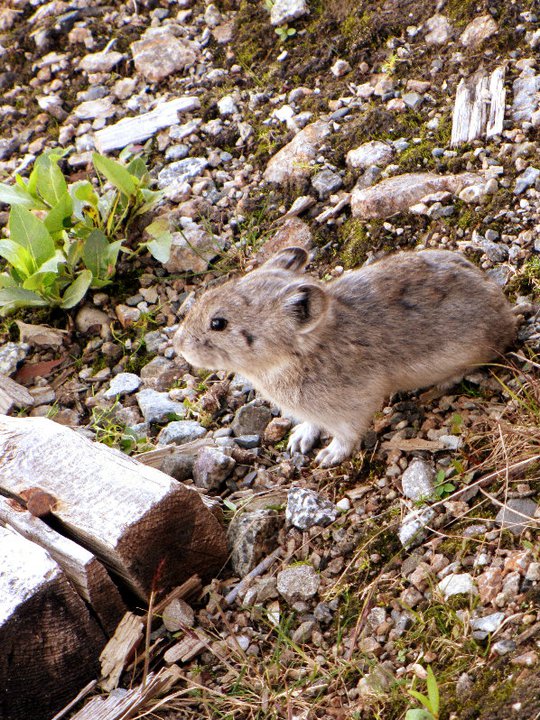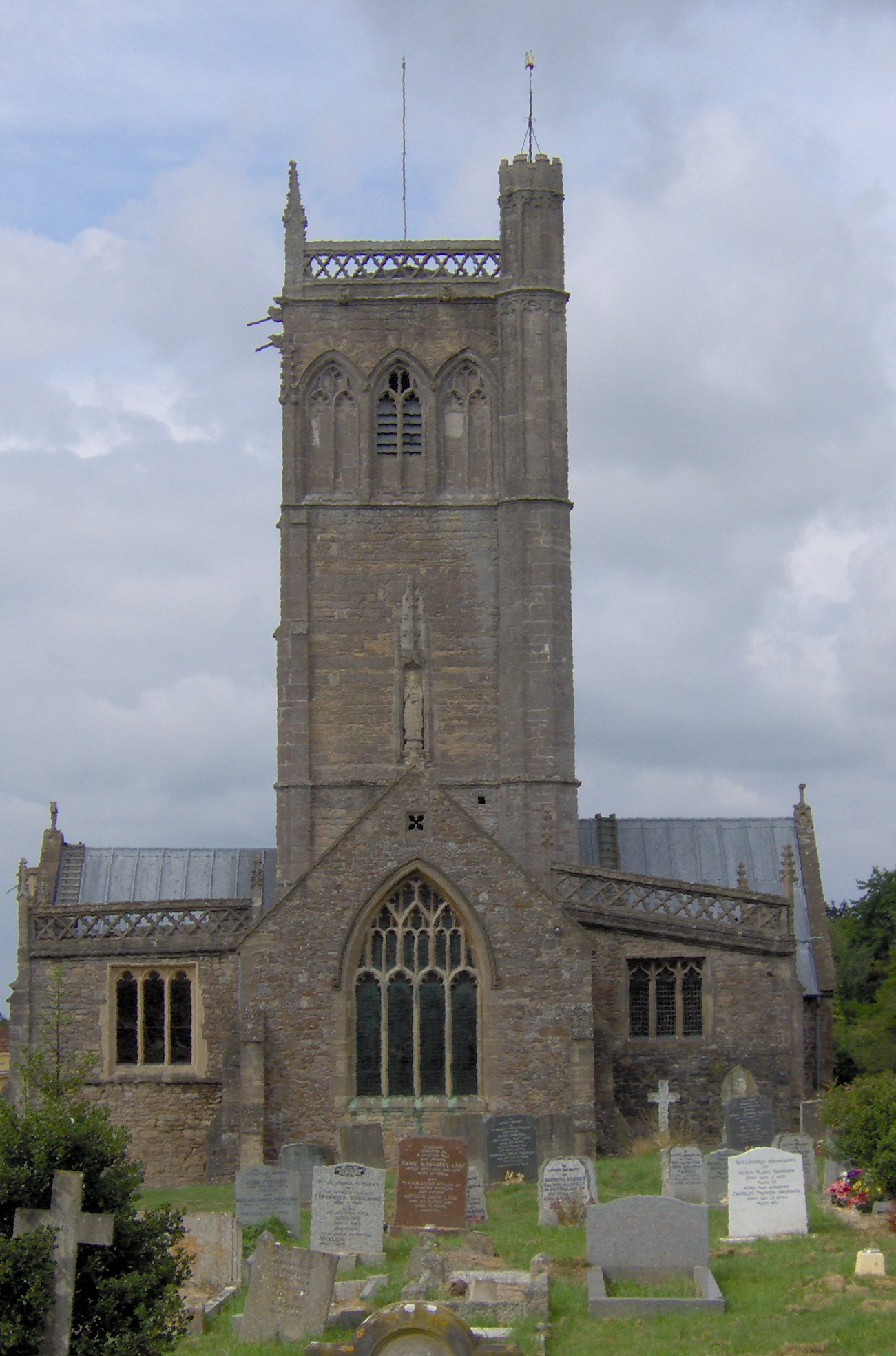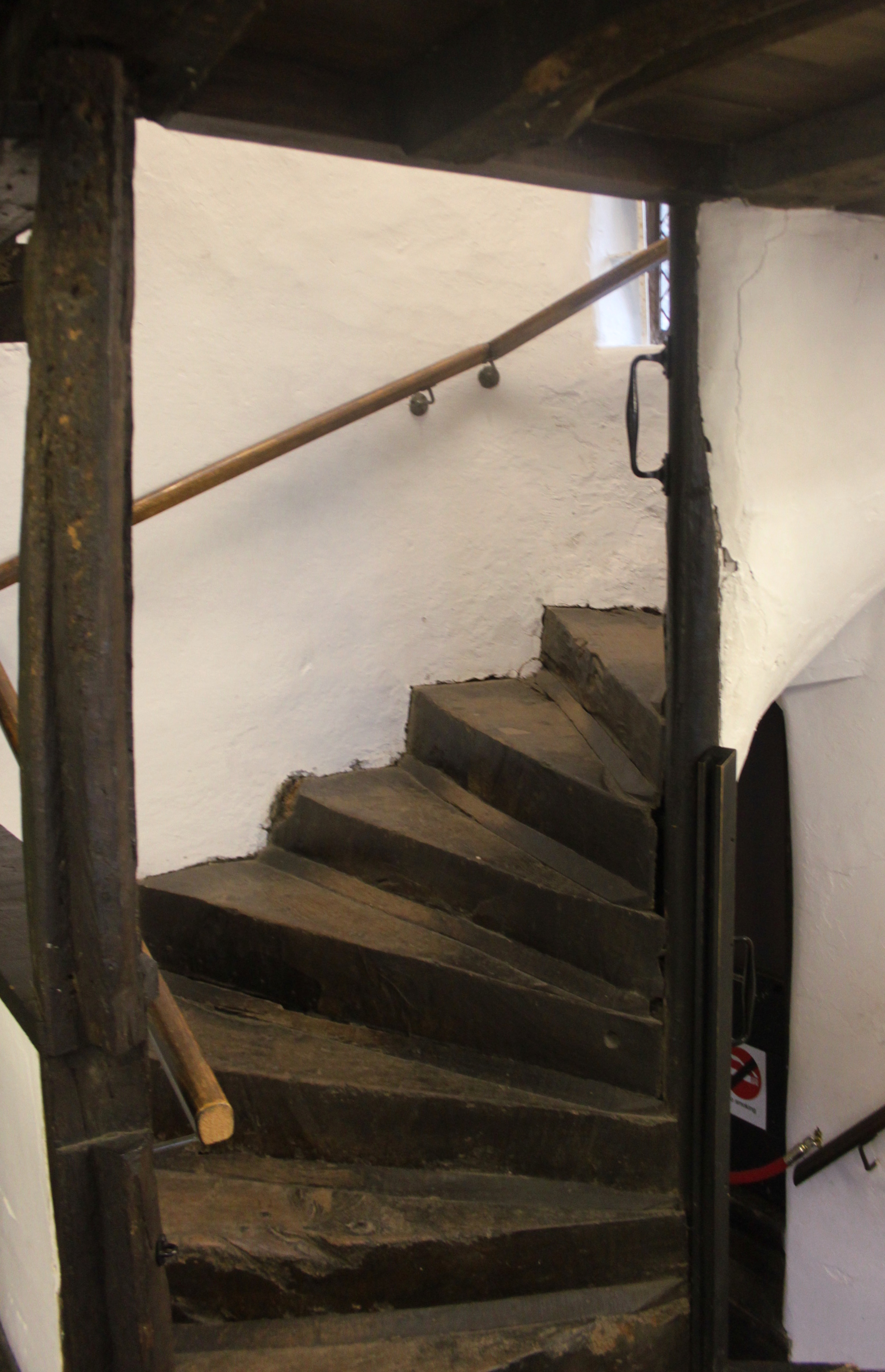|
Ebbor Gorge
Ebbor Gorge is a limestone gorge in Somerset, England, designated and notified in 1952 as a biological Site of Special Scientific Interest in the Mendip Hills. It was donated to the National Trust in 1967 and is now managed by Natural England as a national nature reserve. The gorge was cut mostly into the Clifton Down Limestone, part of the Lower Carboniferous Pembroke Group, by water. The site was occupied by humans in the Neolithic Era and their tools and flint arrow heads have been discovered, along with pottery from the Bronze Age. There are also fossils of small mammals from the Late Devensian. The nature reserve provides a habitat for a variety of flora and fauna, including flowers, butterflies and bats. Geology Ebbor Gorge lies on the southwest-facing slope of the Mendip Hills and consists of a steep-sided ravine cut into 350-million-year-old Carboniferous Limestone of the Dinantian. The gorge was cut into Clifton Down Limestone by meltwater in the Pleistocene Epo ... [...More Info...] [...Related Items...] OR: [Wikipedia] [Google] [Baidu] |
Limestone
Limestone ( calcium carbonate ) is a type of carbonate sedimentary rock which is the main source of the material lime. It is composed mostly of the minerals calcite and aragonite, which are different crystal forms of . Limestone forms when these minerals precipitate out of water containing dissolved calcium. This can take place through both biological and nonbiological processes, though biological processes, such as the accumulation of corals and shells in the sea, have likely been more important for the last 540 million years. Limestone often contains fossils which provide scientists with information on ancient environments and on the evolution of life. About 20% to 25% of sedimentary rock is carbonate rock, and most of this is limestone. The remaining carbonate rock is mostly dolomite, a closely related rock, which contains a high percentage of the mineral dolomite, . ''Magnesian limestone'' is an obsolete and poorly-defined term used variously for dolomite, for limes ... [...More Info...] [...Related Items...] OR: [Wikipedia] [Google] [Baidu] |
Epoch (geology)
The geologic time scale, or geological time scale, (GTS) is a representation of time based on the rock record of Earth. It is a system of chronological dating that uses chronostratigraphy (the process of relating strata to time) and geochronology (scientific branch of geology that aims to determine the age of rocks). It is used primarily by Earth scientists (including geologists, paleontologists, geophysicists, geochemists, and paleoclimatologists) to describe the timing and relationships of events in geologic history. The time scale has been developed through the study of rock layers and the observation of their relationships and identifying features such as lithologies, paleomagnetic properties, and fossils. The definition of standardized international units of geologic time is the responsibility of the International Commission on Stratigraphy (ICS), a constituent body of the International Union of Geological Sciences (IUGS), whose primary objective is to precisely define gl ... [...More Info...] [...Related Items...] OR: [Wikipedia] [Google] [Baidu] |
Red Deer
The red deer (''Cervus elaphus'') is one of the largest deer species. A male red deer is called a stag or hart, and a female is called a hind. The red deer inhabits most of Europe, the Caucasus Mountains region, Anatolia, Iran, and parts of western Asia. It also inhabits the Atlas Mountains of Northern Africa; its early ancestors are thought to have crossed over to Morocco, then to Algeria, Libya and Tunisia via the Strait of Gibraltar, becoming the only species of true deer (Cervidae) to inhabit Africa. Red deer have been introduced to other areas, including Australia, New Zealand, the United States, Canada, Peru, Uruguay, Chile and Argentina. In many parts of the world, the meat (venison) from red deer is used as a food source. Red deer are ruminants, characterized by a four-chambered stomach. Genetics, Genetic evidence indicates that the red deer, as traditionally defined, is a species group, rather than a single species, though exactly how many species the group includes rem ... [...More Info...] [...Related Items...] OR: [Wikipedia] [Google] [Baidu] |
Vole
Voles are small rodents that are relatives of lemmings and hamsters, but with a stouter body; a longer, hairy tail; a slightly rounder head; smaller eyes and ears; and differently formed molars (high-crowned with angular cusps instead of low-crowned with rounded cusps). They are sometimes known as meadow mice or field mice in North America. Vole species form the subfamily Arvicolinae with the lemmings and the muskrats. There are approximately 155 different vole species. Description Voles are small rodents that grow to , depending on the species. Females can have five to ten litters per year, though with an average lifespan of three months and requiring one month to adulthood, two litters is the norm. Gestation lasts for three weeks and the young voles reach sexual maturity in a month. As a result of this biological exponential growth, vole populations can grow very large within a short time. A mating pair can produce a hundred more voles in a year. Voles outwardly resemble s ... [...More Info...] [...Related Items...] OR: [Wikipedia] [Google] [Baidu] |
Norway Lemming
The Norway lemming, also known as the Norwegian lemming (''Lemmus lemmus'') is a common species of lemming found in northern Fennoscandia, where it is the only vertebrate species endemic to the region. The Norway lemming dwells in tundra and fells, and prefers to live near water. Adults feed primarily on sedges, grasses and moss. They are active at both day and night, alternating naps with periods of activity. Distribution It has a wide distribution from western Norway east to the Kola Peninsula. A 2021 study suggests that the lemmings of Novaya Zemlya may also belong to this species; this would extend its range east to Novaya Zemlya island, but these results have not been fully accepted. Description The mainland Norway lemming has a bold pattern of black and yellow-brown, which is variable between individuals. In contrast, the Novaya Zemlya lemming has a cryptic gray coloration (hence why it was previously thought to be a population of the Siberian brown lemming). The spec ... [...More Info...] [...Related Items...] OR: [Wikipedia] [Google] [Baidu] |
Arctic Lemming
The Arctic lemming (''Dicrostonyx torquatus'') is a species of rodent in the family Cricetidae. Although generally classified as a "least concern" species, the Novaya Zemlya subspecies ''(Dicrostonyx torquatus ungulatus)'' is considered a vulnerable species under Russian nature conservation legislation (included in Red Book of Russian Federation since 1998). Biology It is found only in the Arctic biomes in the Russian Federation, and it is the most common mammal on Severnaya Zemlya. Specimens were once found in England, but they are now extirpated. For the most part, lemmings of the genus ''Lemmus'' can coexist with those of genus ''Dicrostonyx''. Arctic lemmings migrate when population density becomes too great, and they resort to swimming in search of a new habitat. The disappearance of lemmings and the lemming cycles in the Arctic have shown that they are the causes of fluctuations in local breeding among geese and waders. Recovery of lemmings after years of low density is as ... [...More Info...] [...Related Items...] OR: [Wikipedia] [Google] [Baidu] |
Pika
A pika ( or ; archaically spelled pica) is a small, mountain-dwelling mammal found in Asia and North America. With short limbs, very round body, an even coat of fur, and no external tail, they resemble their close relative, the rabbit, but with short, rounded ears. The large-eared pika of the Himalayas and nearby mountains is found at heights of more than , among the highest of any mammal. Pikas prefer rocky slopes and graze on a range of plants, mostly grasses, flowers and young stems. In the autumn they pull hay, soft twigs and other stores of food into their burrows to eat during the long, cold winter. The pika is also known as the whistling hare because of its high-pitched alarm call when diving into its burrow. The name ‘pika’ appears to be derived from the Tungus ''piika'', and the scientific name ''Ochotona'' is from the Mongolian word ''ogutun-a, оготно'', which means pika. It is used for any member of the Ochotonidae, a family within the order of lagomorp ... [...More Info...] [...Related Items...] OR: [Wikipedia] [Google] [Baidu] |
Palaeolithic
The Paleolithic or Palaeolithic (), also called the Old Stone Age (from Greek: παλαιός ''palaios'', "old" and λίθος ''lithos'', "stone"), is a period in human prehistory that is distinguished by the original development of stone tools, and which represents almost the entire period of human prehistoric technology. It extends from the earliest known use of stone tools by hominins, 3.3 million years ago, to the end of the Pleistocene, 11,650 cal BP. The Paleolithic Age in Europe preceded the Mesolithic Age, although the date of the transition varies geographically by several thousand years. During the Paleolithic Age, hominins grouped together in small societies such as bands and subsisted by gathering plants, fishing, and hunting or scavenging wild animals. The Paleolithic Age is characterized by the use of knapped stone tools, although at the time humans also used wood and bone tools. Other organic commodities were adapted for use as tools, includ ... [...More Info...] [...Related Items...] OR: [Wikipedia] [Google] [Baidu] |
Axbridge
Axbridge is a small town in Somerset, England, in the Sedgemoor district on the River Axe, near the southern edge of the Mendip Hills. The town's population according to the 2011 census was 2,057. History ''Axanbrycg'' is suggested as the source of the name, meaning a bridge over the River Axe, in the early 9th century. Early inhabitants of the area almost certainly include the Romans (who are known to have mined lead on the top of the Mendips) and earlier still, prehistoric man, who lived in the local caves, and whose flint tools have been found on the slopes of the local hills. The history of Axbridge can be traced back to the reign of King Alfred when it was part of the Saxons' defence system for Wessex against the Vikings. In the Burghal Hidage, a list of ''burhs'' compiled in 910, it was listed as ''Axanbrycg''. A listing of Axbridge appears in the Domesday survey of 1086 as ', meaning 'axe bridge' from the Old English ' and '. It was part of the royal manor of Chedda ... [...More Info...] [...Related Items...] OR: [Wikipedia] [Google] [Baidu] |
King John's Hunting Lodge, Axbridge
King John's Hunting Lodge is a wool-merchant's house built , long after the death of King John of England, King John in 1216, in Axbridge, a town in the English county of Somerset. It is a Jettying, jettied timber framing, timber-frame building of three storeys, occupying a corner plot on the town square. The building has served a variety of purposes with shops on the ground floor and workshops and living quarters on the first and second floors. At one time part of the building was occupied by the King's Head Inn; a sculpture of a king's head, which acted as a sign for the pub, is preserved within and a replica is attached to the outside. The lodge was bequeathed to the National Trust for Places of Historic Interest or Natural Beauty, National Trust in 1971, and repairs were undertaken to reverse significant deterioration to the building. The house is leased by the National Trust to Axbridge and District Museum Trust, who operate it as a local museum which includes exhibits rel ... [...More Info...] [...Related Items...] OR: [Wikipedia] [Google] [Baidu] |
Wells And Mendip Museum
The Wells and Mendip Museum is a museum in the city of Wells. It is a registered charity and an accredited member of the Museums, Libraries and Archives Council. The exhibits include items of local history and archaeological finds. Building The museum is next to Wells Cathedral, and housed in the former Chancellors' House, with 15th-century origins, however most of the current fabric of the building is from the 17th and 18th centuries. The stone building has gabled roofs of Welsh slate. A small entrance hall provides access to a staircase hall leading to a salon in gothic revival style with a marble fireplace. The front of the building was remodelled around 1828 and the rear includes a 20th-century extension. It has been designated as a Grade II listed building. Museum history It was founded by Herbert E. Balch in 1893, to display his collection of local artefacts and memorabilia, and further exhibits have been added since. It is run by the Wells Natural History and Archaeological ... [...More Info...] [...Related Items...] OR: [Wikipedia] [Google] [Baidu] |
Neolithic
The Neolithic period, or New Stone Age, is an Old World archaeological period and the final division of the Stone Age. It saw the Neolithic Revolution, a wide-ranging set of developments that appear to have arisen independently in several parts of the world. This "Neolithic package" included the introduction of farming, domestication of animals, and change from a hunter-gatherer lifestyle to one of settlement. It began about 12,000 years ago when farming appeared in the Epipalaeolithic Near East, and later in other parts of the world. The Neolithic lasted in the Near East until the transitional period of the Chalcolithic (Copper Age) from about 6,500 years ago (4500 BC), marked by the development of metallurgy, leading up to the Bronze Age and Iron Age. In other places the Neolithic followed the Mesolithic (Middle Stone Age) and then lasted until later. In Ancient Egypt, the Neolithic lasted until the Protodynastic period, 3150 BC.Karin Sowada and Peter Grave. Egypt in th ... [...More Info...] [...Related Items...] OR: [Wikipedia] [Google] [Baidu] |







